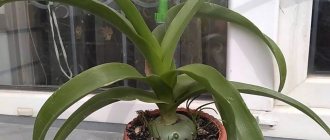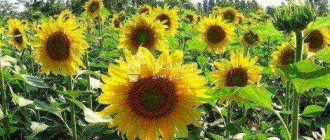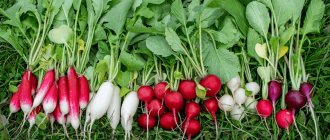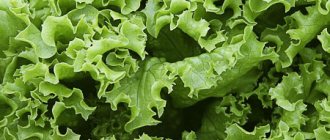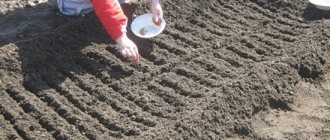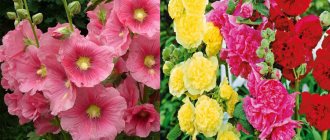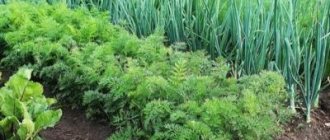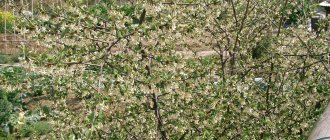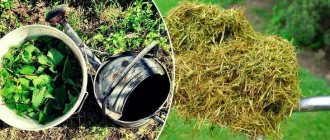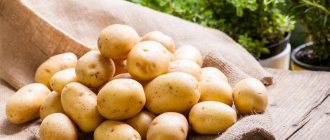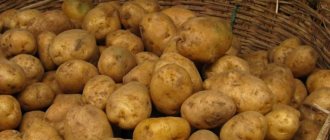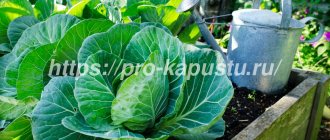Features of the plant
Looking at the photo of Indian onions, one can note visual associations with a garden crop familiar to many. Long, flat, green leaves with a yellow stripe appear from the stem represented by the bulb. As they grow, they begin to curl.
Biennial varieties can produce arrows with white or cream inflorescences. South America is considered the homeland of the plant. It got its name because the juice is similar to Indian spices.
Indian onions do not require special care. Its growth rate does not depend on the presence of sun and air temperature. Therefore, in winter it can be grown in greenhouses and residential premises, and in summer it can be planted in open ground.
For optimal plant development, moderate watering is required. It is performed when the top layer of soil is noticed to dry out.
Caring for Indian onions
The unpretentious perennial feels great in the garden. It can be planted in direct light or partial shade. Growing Indian onions outdoors is a pleasure.
In open space, pollination occurs naturally, and the flower enters the active reproduction phase, giving birth to many “children.” Bulbs should be fed with complex fertilizers.
For wintering, the plant is carefully dug up, trying not to damage the meter-long roots, and stored in a cool cellar.
The soil
Place drainage at the bottom of the pot, then fill with soil, which consists of:
- Sod land (1 part)
- Leaf earth (1 part)
- River sand (2 parts)
Watering
Indian onions require moderate watering. The poultry plant does not tolerate excess moisture well; frequent overwatering threatens to rot the roots. In winter, the plant is watered only after the top layer of soil has completely dried.
The exotic flower likes a climate of average humidity, so you will only need a humidifier if your air is very dry.
The flower requires ground and foliar watering, so the plant is sprayed with water at room temperature.
Lighting
The tailed poultry plant loves light, so when growing Indian onions on a windowsill, southern and eastern windows are best suited.
The more light there is, the longer your flower will bloom; the main thing is to periodically turn the pot so that the leaves do not lean in one direction.
If there are no sunny windows, then do not be upset, Indian onions can grow in the shade, they will just develop more slowly.
To compensate for the lack of light, the flower is brought into the light once a month, for example, on a balcony and left for a week. The main thing is that the flower should not be exposed to direct rays of the scorching sun.
Temperature
When caring for Indian onions at home in summer, the temperature should be from 20 to 22.
At prolonged temperatures above 39, the plant will fall into a state of stagnation.
In winter, the plant goes dormant, but even then the temperature should not fall below 12°C, the minimum short-term temperature is -5°C.
Top dressing
Mineral or organic fertilizers (infusion of manure) are suitable for fertilizing the plant. Once every thirty days, water it with a pale infusion of manganese or an infusion of ash from wood; ash from coal is not suitable.
Transplanting Indian onions
Indian onions are replanted once or twice during the year; they really like this procedure and, in gratitude, they bloom long and profusely.
When transplanting, leave 2 centimeters between the bulb and the edge of the pot.
When transplanting, only a third of the bulb is planted. If you bury the bulb completely, you will have to dig up the plant to separate the shoots.
Reproduction
Propagated by seeds, layering and division. In the second year of life, daughter bulbs will appear on the flower bulb. In the fall, they are separated and rooted in a pot with moist soil.
The tiny black seeds have almost 100% germination rate. Planting period: late spring – early summer. With frequent moderate watering, they grow into a small bulb in 6 to 8 months.
If there are no seeds, and for some reason the bulb did not produce layering, you can cut the adult bulb into two equal parts and plant them in different pots.
In another article, we described another variety of Onions - Fragrant Onions.
Beneficial features
According to research results, Indian onion juice has a healing effect. Due to the substances included in its composition, it is able to have an antiseptic, analgesic and antibacterial effect.
In folk medicine it is successfully used in the treatment of:
- hematoma;
- fractures
- rheumatic joint pathologies;
- inflammatory processes;
- radiculitis;
- osteochondrosis;
- insect bites;
- varicose veins;
- foot fungus;
- skin neoplasms such as papillomas.
Although Indian onion leaves are often used to obtain juice, all parts of the plant have a medicinal effect. They are used as components for the manufacture of ointments, tinctures and other products.
Use in folk medicine
The tailed poultry plant has many useful and medicinal properties:
- antimicrobial,
- anti-inflammatory,
- antimycotic,
- painkiller,
- warming,
- antithrombotic
Thanks to these properties, Indian onion is widely used in folk medicine. Fresh, freshly cut leaves are used to treat sore spots. Ointments, creams, tinctures and masks are made from the remaining leaves and onion heads.
For sore joints and bruises
For sore joints and bruises, Indian onions are used in the form of lotions or rubbing.
- Onion juice stimulates blood flow and improves metabolic processes in the area of an aching joint or bruise, pain goes away and swelling decreases.
- Rubbing onion tincture to joints reduces inflammation and improves their mobility in cases of osteochondrosis, arthrosis, rheumatism and arthritis.
- Onions remove calcium salts and uric acid from the body, thereby preventing their deposition in the joints.
Indian onion tincture for joints:
How to treat joints with Indian onions
For nail fungus
Nail fungus is a fairly common and unpleasant disease. The likelihood of infection is high because fungal spores are very tenacious.
The antimycotic properties of Indian onion make it possible to use it against various types of fungus, even in advanced forms. Applications, baths and antifungal ointment are made from this plant.
- Applications . Grind a piece of the leaf into a paste, apply it to the affected nail and secure it with cellophane on top.
- Foot baths . Grind the leaves, add a liter of hot water and leave to steep for at least 1.5 hours. Then dilute the infusion with warm water. You can add 30 grams of vinegar (the fungus dies in an acidic environment). Steam your clean feet in the bath for 20 minutes, dry with a towel and put on clean socks made of natural fabric.
- Antifungal ointment . Mix crushed onion leaves with 10 grams of propolis and 50 grams of lanolin. Place on low heat for 7-10 minutes. Cool. Apply a thin layer to the problem area, remove the residue after 20 minutes. The ointment should be stored in the refrigerator.
By regularly using one of these recipes for 7-10 days, you can get rid of nail fungus.
Indian onion propagation
For skin, mucous membranes and veins
With the help of ornithogalum juice you can get rid of papillomas and warts.
Warts are a viral disease. It manifests itself in the form of the formation of dense, rough, grayish skin nodules on the human body. Transmitted through household items.
Papillomas are new growths on the skin caused by the human papillomavirus. It is transmitted by contact, from person to person.
To get rid of growths using ornithogalum, you need:
- Drop undiluted poultry juice onto the wart or papilloma and leave for 10 minutes.
- Then rinse with water.
- Repeat the process every day until the growth completely disappears.
Ornithogalum juice for papillomas is effective and is used in some medicines.
Indian onion masks with the addition of glycerin give a fresh complexion, lighten skin pigmentation and smooth out fine wrinkles.
Using a Chinese bow, you can remove heel spurs . To do this, you need to chop the onion leaf, grate one potato along with the peel and mix the two resulting masses. Spread the mixture over gauze, then apply it to the spur and bandage it. Cover the top with a plastic bag or film. Put a warm sock on top of the film or wrap your foot in a blanket. Keep the compress for 24 hours, then change it. After a week of daily compresses, the spur will disappear.
Poultry juice contains a natural antibiotic , which is good for inflammation in the sinuses and throat diseases (sore throat, tonsillitis, sinusitis).
The substances in the plant have an anticoagulant effect: they thin the blood and prevent the formation of blood clots.
Healing properties of Indian onions. Story. Recipes
Recommendations for use
When treating with Indian onions, it is worth remembering that the plant is poisonous. Therefore, it is not included in medications for oral administration. But based on it, a large number of recipes are created for external use, which should not come into contact with the mucous membrane of the eyes and other particularly sensitive parts of the body.
The easiest way to experience the healing effect is to apply a freshly cut leaf of the plant to the affected area of the skin. Along the way, you can evaluate the effect.
It is believed that the therapeutic effect of the drug is accompanied by a slight burning and tingling sensation, which passes along with the pain. If no effect is observed when the plant comes into contact with the skin, you should choose another method of eliminating the disease.
Planting and methods of propagation
Planting and propagation will not be difficult. Onions can be grown: from a bulb, from seeds, using sprouts.
Bulb
This method is the easiest. To do this, you need to prepare a suitable pot with fertile soil and plant the existing onion there, which should not be driven deep into the ground, but buried so that the tip of the onion looks out. The plant will take root and produce leaves very quickly, just do not forget about watering.
Seeds
Growing onions this way is somewhat more difficult. In the spring, specially prepared seeds (kept in the refrigerator for 4 months) are sown to a depth of 1.5 cm in a box of nutritious soil purchased at a flower shop or prepared by hand (by mixing peat and perlite in a 1:1 ratio). Seed germination is a long process. Only six months later the first shoots will appear. After the third leaf appears, the plants can be planted in separate pots.
Sprouts
This method of reproduction is the most common. As soon as the poultry plant fades, a lot of children will appear on the tuber, which will cling to it from all sides. These growths must be very carefully separated and simply stuck into moist soil, each in a separate pot. After a couple of weeks, the small onions will sprout roots and be able to grow on their own. Just don’t forget to water them from time to time.
If you want to get healthy and strong plants, plant them in ceramic pots that allow air to pass through without problems and evaporate moisture well.
Contraindications for use
Treatment with Indian onions has a number of limitations. Following them will allow you to protect yourself from improper use of the drug. Such therapy is contraindicated in persons with:
- bleeding gums;
- hemophilia;
- pregnancy;
- lactation period;
- allergies.
To identify signs of individual intolerance, you need to apply a little juice to the elbow. If within two hours redness, swelling, rash, itching or other signs of allergy do not appear in this area of the skin, the product can be used.
It is also worth remembering that prolonged exposure to the substance on the skin can lead to a decrease in the level of leukocytes in the blood. Therefore, the course of treatment cannot exceed 30 days.
Tips and tricks
- Despite all the benefits of the plant, there are a number of contraindications. So, the juice cannot be consumed in its pure form, as it is poisonous.
- The plant has not yet been fully studied by medicine. However, there are many positive reviews from those people who have already been helped by onion products.
- Do not allow the juice to get into your eyes. If trouble does occur, the eyes are thoroughly washed with water and 2 drops of taufon are instilled. Then you need to wait 10 minutes.
- The preparation of drugs is carried out with rubber gloves, otherwise allergic reactions may occur.
- If the juice is intensively rubbed into the skin, burns may occur. You can get rid of them with olive oil.
- If increased gum bleeding is observed, the plant juice should not be used.
- Products from poultry are contraindicated for use by people with hemophilia.
Fighting illnesses, or when a birder rushes to the rescue
The bulb, leaves and even stems of the Indian onion are beneficial. But in each specific case one thing is used. The main thing about them is the juice is whitish in color, without taste or smell. It is this factor that makes the poultry plant a favorite among many, because it can be used at any time and then “go out into public.”
Indian onion is used externally only
Indian onion provides significant pain relief and a powerful therapeutic effect for:
- arthritis;
- sprains of ligaments and tendons;
- radiculitis and osteochondrosis;
- other joint diseases;
- polyarthritis, salt deposition;
- inflammation of the sciatic nerve.
But the fight against ailments of the musculoskeletal system is not the only advantage of poultry farming. It is able to stop the development of benign and malignant tumors. To do this, you need to use compresses and tinctures, take them strictly according to the prescription.
Indian onion milk also provides undeniable benefits for insect bites, small, long-lasting wounds (cuts, cracks, abrasions), skin rashes, and herpes. To do this, just pick a stem or leaf from the plant, squeeze out the juice and anoint the sore spot. Along with peeling, redness and itching, the pain will disappear.
In the same way you can get rid of headaches, lumbar or dental. However, the leaf or stem from which the milk has been squeezed out should not be thrown away. With their help you can make a tincture (cold or hot), ointment, balm.
Growing poultry
In subtropical climates, Indian onion can grow wild all year round, but in our country it is mostly grown as a houseplant. Our housewives fell in love with it because growing it at home causes almost no trouble. The poultry plant is undemanding to the soil, it does not need a large container for planting, it does not need to be constantly fed and replanted, and it does not need to be watered often.
You can grow it in several ways: from a seed, by dividing the bulb, but the simplest and most popular is by separating the children. It is enough to separate such a baby from the bulb and plant it in a separate pot - and after two weeks it will already take root. You need to plant it so that the baby sticks half out of the ground.
As a houseplant, Indian onion feels great on southern windows, but can also grow on northern ones. The plant cannot tolerate excess moisture, so it should be watered only when the top layer of soil is completely dry.
From the end of May to the beginning of September, it is possible to grow Indian onions outdoors, where they quickly take root and grow, pleasing the eye with large leaves and beautiful flowers. But you can’t leave it in the garden or flowerbed for the winter - this is a heat-loving plant.
Harvesting Indian onion raw materials for medicinal needs can be done all year round, but it is best to do this during flowering - at this time the plant has the greatest healing power.
Indian onions can save a person from many diseases. But it, being poisonous, can cause a lot of problems if treated unskillfully and uncontrolled. Therefore, when deciding to use poultry for your treatment, make sure that it does you good and not harm.
At the end of the twentieth century, Siberian healers paid attention to the medicinal properties of Indian onion or Ornithógalum. Since then it has gained wide popularity. Several species of bulbous plants are under threat of destruction. Therefore, they were listed in the Red Book of the Russian Federation.
